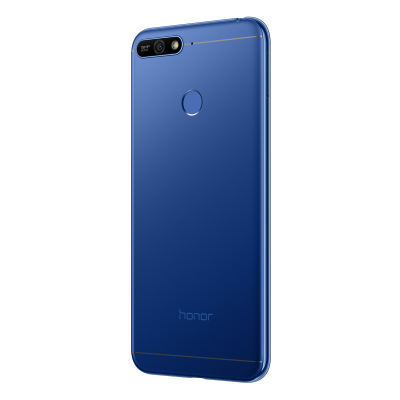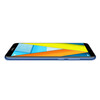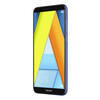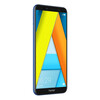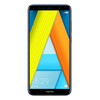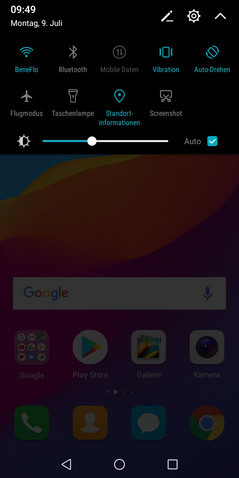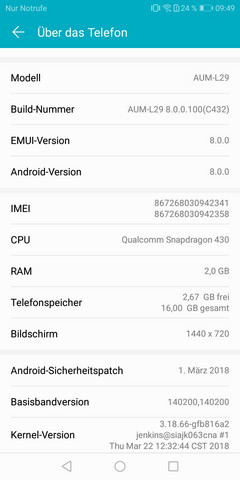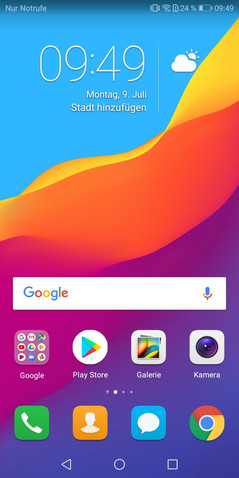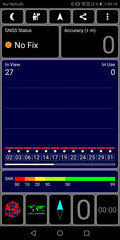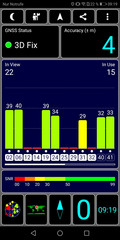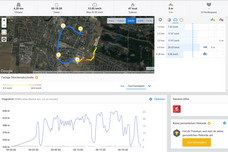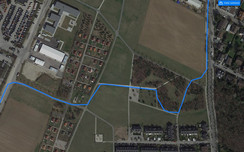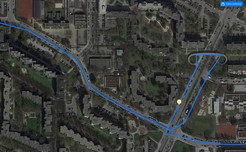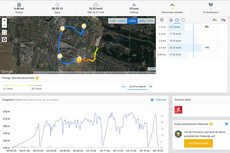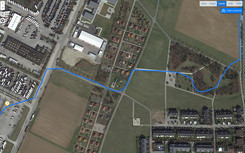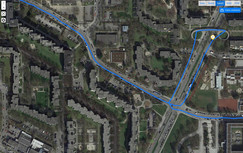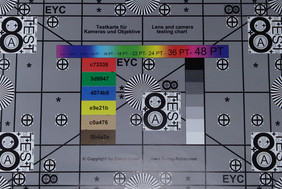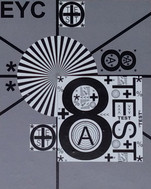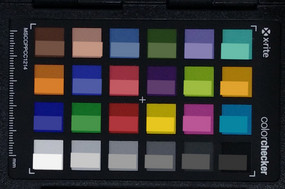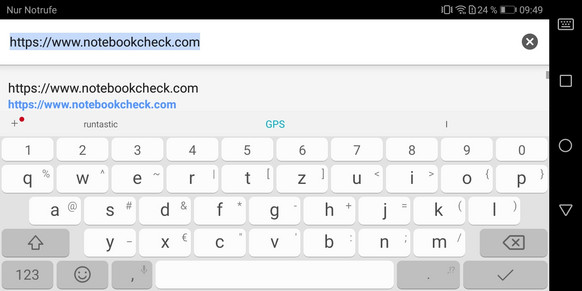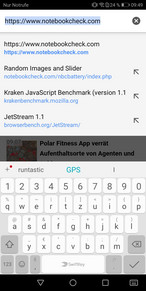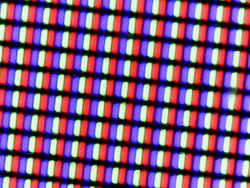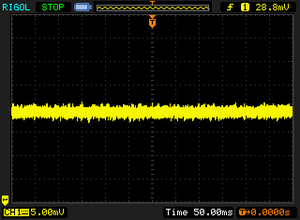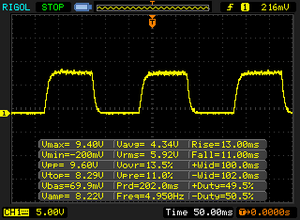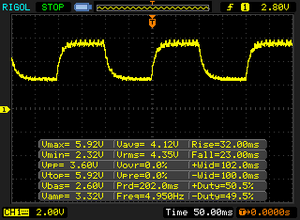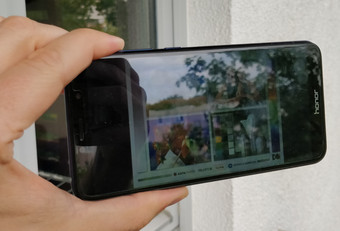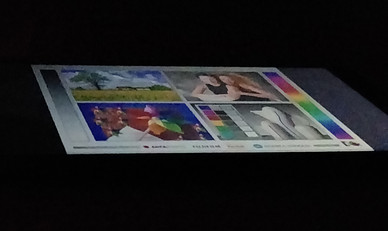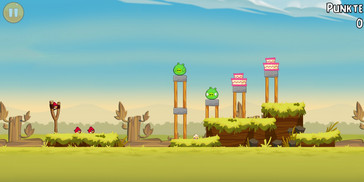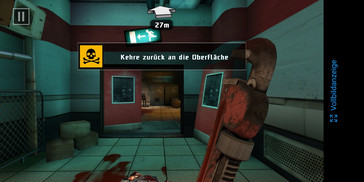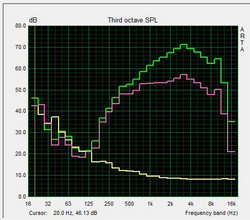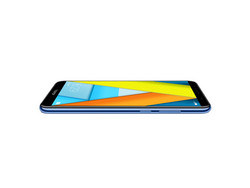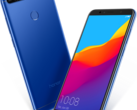Honor 7A Smartphone Review
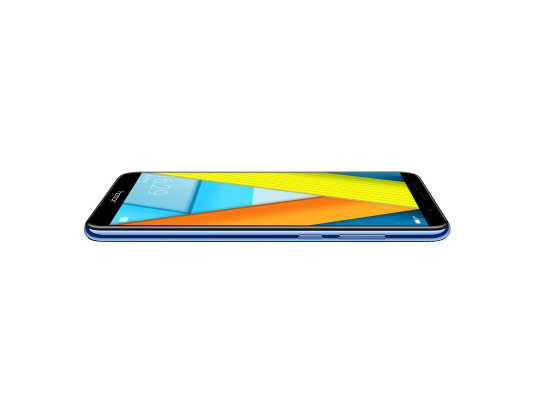
It is a little confusing: while the Honor 7 was a flagship model of Huawei's direct marketing brand at one time, nowadays a "7" in the model name of the Honor points to an entry or mid-range model such as the Honor 7X. In addition, the letters are not designated alphabetically according to the performance. While the Honor 7C has better equipment than the Honor 7A which we are testing now, the Honor 7S ranges below these two models, and the Honor 7X significantly above.
For a recommended retail price of 139 Euros (~$162), we can get the Honor 7A into our test lab and you can also get it into your home, if you like. At first glance, the slightly more expensive entry-level phone has the usual equipment. In this price range, you do not need to look long to find competitors: there are for example the Lenovo Moto E4 Plus, the Huawei Y6 2018 from the same manufacturer, the Sony Xperia L1, and also the Umidigi A1 Pro.
Case – A lot of plastic in the Honor 7A
In our Honor 7A test, we first take a look at the exterior of the smartphone. The device is made entirely from plastic which is matte at the back and also has a slight metallic shine. In terms of colors, you can choose either black or blue with a black front, or gold with a white front. The display bezels are really quite thin for such an affordable smartphone. At 150 grams (~5.3 oz), our test unit has exactly the same weight as the Huawei Y6 2018, which makes it quite a light smartphone.
While our impression of the quality is okay for an affordable smartphone, it is still just a plastic case that appears less high-quality than the case of the Huawei Y6 2018, which can at least present a metal frame. The stability is decent. Even though in the front and back the case can be slightly pressed in, the pressure does not reach the screen. You can also warp the smartphone, which causes it to creak quietly.
Features – microSD reader and dual SIM
In Europe, the Honor 7A is only available with 16 GB of storage and 2 GB of RAM, while there are also versions with 3 GB of RAM internationally. The storage can be expanded via microSD card. There is even an extra slot for this, so that the dual-SIM smartphone can accept two SIM cards plus a microSD.
Software – Many preinstalled apps in the Honor 7A
The operating system of the Honor 7A is Android 8, which is overlaid by Honor's EMUI user interface. The security patches are on the level of March 1, 2018, which makes them a bit old. Honor has preinstalled numerous apps, including Designs which allows you to adjust the Honor 7A user interface, AppGallery which is Huawei's own app store, and various tools. There are also some preinstalled advertising apps from ordering portals and streaming services.
Communication and GPS – Slow WLAN transfer
In terms of speed, the Honor 7A supports LTE Cat. 4, which is standard for the entry-level. The amount of supported LTE bands includes all that are necessary in Europe, but you will not get very far beyond that. In the city area, the reception is decent.
The 802.11 b/g/n WLAN standards are supported. However, the Honor 7A is quite slow in terms of the transfer rates. It is about at the same level as the Moto E4 Plus, and together, these two are the slowest in our comparison.
| Networking | |
| iperf3 transmit AX12 | |
| Sony Xperia L1 | |
| Umidigi A1 Pro | |
| Huawei Y6 2018 | |
| Lenovo Moto E4 Plus | |
| Honor 7A | |
| iperf3 receive AX12 | |
| Sony Xperia L1 | |
| Umidigi A1 Pro | |
| Huawei Y6 2018 | |
| Honor 7A | |
| Lenovo Moto E4 Plus | |
While the Honor smartphone is unable to locate us indoors, it quickly achieves an accuracy of 4 meters (~13 ft) outdoors.
During our bike tour with the Honor 7A and a Garmin Edge 520 as a comparison device, our test unit shows a similar accuracy as the professional navigation device, and is thus surprisingly suited for navigation tasks.
Telephone Functions and Voice Quality – Honor smartphone with decent voice quality
Honor has slightly modified the standard Android Telephone app, but users should be able to find their way around quickly.
While the voice quality of the ear piece is okay, we can hear some significant noise in the background. Our conversation partner seems relatively present. Our own voice is reproduced very loud and can easily become distorted while speaking loudly. Using the speaker, the voice of our conversation partner becomes even clearer, and this option also allows for a good maximum volume. However, you can still clearly notice the noise in the background, and our own voice is only recorded reliably by the microphone if we talk loud enough.
Cameras – Cheap smartphone with a decent camera
In contrast to earlier announcements, the Honor 7A is only available in Europe with a single camera in the back. However, this is not necessarily a disadvantage if the quality is right. At 13 Megapixels, the resolution is decent, but the pictures appear relatively dark, and some have a clearly visible blue tint. In light areas, there is only little differentiation. The sharpness of the detail is okay. Videos can be recorded at 1080p and 30 FPS. While the color reproduction is slightly pale, the exposure reacts fast and smoothly to changing light conditions, the Autofocus works without being very noticeable, and the sharpness of the detail is right.
The front camera has a resolution of 8 Megapixels and has its own LED flash. The image sharpness is good. However, light areas can quickly become too bright, and the colors appear very pale.
The main camera must also prove itself under controlled light conditions in the test lab. It also shows here that the images are reproduced very dark. Text in front of colored background easily becomes blurry. As expected, the color reproduction is also too dark.
Accessories and Warranty – The absolutely necessary is included
The accessories include what is absolutely necessary: a charger, a USB cable, a SIM tool to open the SIM tray, quick start instructions, and a warranty card.
The warranty is 24 months. Please see our Guarantees, Return policies and Warranties FAQ for country-specific information.
Input Devices and Operation – No problems during the operation of the Honor 7A
While Honor has chosen SwiftKey as the virtual keyboard app for its smartphone, you can also install other apps without any problems. SwiftKey offers many settings and input options and allows you to type quickly and reliably.
The touchscreen is protected by a tightly glued-on display protector which offers good sliding characteristics and allows the touchscreen to be easily and accurately controlled in all the corners and edges.
The fingerprint sensor on the back of the smartphone unlocks it with a minimal delay and is very reliable. The Android menu keys are on the screen, and the only hardware buttons are on the right side of the case. These are the buttons for standby and the volume, and they can also be operated comfortably and reliably.
In terms of the gesture controls, you can flip the phone upside down to silence it or tap on the screen twice to put it into standby or wake it up.
Display – Dark screen with a high contrast
At 5.7 inches, the Honor smartphone offers a large IPS display in the modern 2:1 format. While this allows for a tall case design, the whole area cannot be used by 16:9 contents such as videos. The 720p resolution expanded to 2:1 is standard in this price range. However, in larger display areas such as in this case, you can notice a slight blurriness compared to models with a higher resolution. At 395 cd/m² on average, the display of the Honor 7A is not particularly bright. The Umidigi A1 Pro offers much more here at 570 cd/m². The brightness distribution on the screen of the Honor 7A is also only mediocre. At 88%, you can see some brightness differences in large color areas from time to time.
| |||||||||||||||||||||||||
Brightness Distribution: 88 %
Center on Battery: 417 cd/m²
Contrast: 2317:1 (Black: 0.18 cd/m²)
ΔE ColorChecker Calman: 6.46 | ∀{0.5-29.43 Ø4.78}
ΔE Greyscale Calman: 5.8 | ∀{0.09-98 Ø5}
89.9% sRGB (Calman 2D)
Gamma: 2.423
CCT: 7839 K
| Honor 7A IPS, 1440x720, 5.7" | Huawei Y6 2018 IPS, 1440x720, 5.7" | Umidigi A1 Pro IPS, 1440x720, 5.5" | Lenovo Moto E4 Plus IPS, 1280x720, 5.5" | Sony Xperia L1 IPS, 1280x720, 5.5" | |
|---|---|---|---|---|---|
| Screen | -17% | -2% | -9% | -19% | |
| Brightness middle (cd/m²) | 417 | 483 16% | 594 42% | 425 2% | 479 15% |
| Brightness (cd/m²) | 395 | 460 16% | 570 44% | 425 8% | 478 21% |
| Brightness Distribution (%) | 88 | 88 0% | 86 -2% | 93 6% | 94 7% |
| Black Level * (cd/m²) | 0.18 | 0.4 -122% | 0.22 -22% | 0.37 -106% | 0.58 -222% |
| Contrast (:1) | 2317 | 1208 -48% | 2700 17% | 1149 -50% | 826 -64% |
| Colorchecker dE 2000 * | 6.46 | 5.8 10% | 6.63 -3% | 4.7 27% | 4.5 30% |
| Colorchecker dE 2000 max. * | 10.72 | 12.6 -18% | 13.99 -31% | 8.3 23% | 7.5 30% |
| Greyscale dE 2000 * | 5.8 | 5 14% | 9.2 -59% | 4.6 21% | 4.1 29% |
| Gamma | 2.423 91% | 2.6 85% | 2.24 98% | 2.17 101% | 2.03 108% |
| CCT | 7839 83% | 7709 84% | 8663 75% | 7445 87% | 7139 91% |
| Colorchecker dE 2000 calibrated * | 4.42 |
* ... smaller is better
Screen Flickering / PWM (Pulse-Width Modulation)
| Screen flickering / PWM not detected | ≤ 25 % brightness setting | ||
In comparison: 53 % of all tested devices do not use PWM to dim the display. If PWM was detected, an average of 8108 (minimum: 5 - maximum: 343500) Hz was measured. | |||
At 0.18 cd/m², the black value is very low, which results in a very good contrast ratio of 2317:1. Colors appear quite vibrant on the screen.
Taking a more careful look at the color reproduction using the spectral photometer and the CalMAN software, we find a significant blue tint, which you can remedy via the blue light filter and the manual color temperature setting option. The color accuracy is average, but in order to really be able to judge colors in photos for example, the screen would need a lot of adjustment work.
Display Response Times
| ↔ Response Time Black to White | ||
|---|---|---|
| 24 ms ... rise ↗ and fall ↘ combined | ↗ 13 ms rise | |
| ↘ 11 ms fall | ||
| The screen shows good response rates in our tests, but may be too slow for competitive gamers. In comparison, all tested devices range from 0.1 (minimum) to 240 (maximum) ms. » 53 % of all devices are better. This means that the measured response time is worse than the average of all tested devices (20.2 ms). | ||
| ↔ Response Time 50% Grey to 80% Grey | ||
| 55 ms ... rise ↗ and fall ↘ combined | ↗ 32 ms rise | |
| ↘ 23 ms fall | ||
| The screen shows slow response rates in our tests and will be unsatisfactory for gamers. In comparison, all tested devices range from 0.165 (minimum) to 636 (maximum) ms. » 91 % of all devices are better. This means that the measured response time is worse than the average of all tested devices (31.6 ms). | ||
Performance – An affordable smartphone with a lot of performance
The Qualcomm Snapdragon 430 would still be a good SoC for slightly more expensive devices, and so it is not surprising that the Honor 7A delivers a good performance for its price range and is able to leave the comparison devices behind.
Since the Qualcomm Adreno 505 could similarly also be used as a graphics solution in affordable mid-range devices, the Honor smartphone achieves very good frame rates for an entry-level smartphone in the benchmarks.
| AnTuTu v6 - Total Score (sort by value) | |
| Honor 7A | |
| Huawei Y6 2018 | |
| Umidigi A1 Pro | |
| Lenovo Moto E4 Plus | |
| Sony Xperia L1 | |
| Average Qualcomm Snapdragon 430 (MSM8937) (42798 - 47066, n=16) | |
| AnTuTu v7 - Total Score (sort by value) | |
| Honor 7A | |
| Huawei Y6 2018 | |
| Umidigi A1 Pro | |
| Average Qualcomm Snapdragon 430 (MSM8937) (44992 - 59990, n=11) | |
| PCMark for Android | |
| Work performance score (sort by value) | |
| Honor 7A | |
| Huawei Y6 2018 | |
| Umidigi A1 Pro | |
| Lenovo Moto E4 Plus | |
| Sony Xperia L1 | |
| Average Qualcomm Snapdragon 430 (MSM8937) (3347 - 5290, n=18) | |
| Work 2.0 performance score (sort by value) | |
| Honor 7A | |
| Huawei Y6 2018 | |
| Umidigi A1 Pro | |
| Lenovo Moto E4 Plus | |
| Sony Xperia L1 | |
| Average Qualcomm Snapdragon 430 (MSM8937) (3408 - 3892, n=16) | |
| GFXBench 3.1 | |
| on screen Manhattan ES 3.1 Onscreen (sort by value) | |
| Honor 7A | |
| Huawei Y6 2018 | |
| Umidigi A1 Pro | |
| Lenovo Moto E4 Plus | |
| Sony Xperia L1 | |
| Average Qualcomm Snapdragon 430 (MSM8937) (4.3 - 11, n=17) | |
| Average of class Smartphone (11 - 166, n=157, last 2 years) | |
| 1920x1080 Manhattan ES 3.1 Offscreen (sort by value) | |
| Honor 7A | |
| Huawei Y6 2018 | |
| Umidigi A1 Pro | |
| Lenovo Moto E4 Plus | |
| Sony Xperia L1 | |
| Average Qualcomm Snapdragon 430 (MSM8937) (2.2 - 4.9, n=17) | |
| Average of class Smartphone (8.4 - 413, n=156, last 2 years) | |
| GFXBench | |
| on screen Car Chase Onscreen (sort by value) | |
| Honor 7A | |
| Huawei Y6 2018 | |
| Umidigi A1 Pro | |
| Average Qualcomm Snapdragon 430 (MSM8937) (2.4 - 5.9, n=17) | |
| Average of class Smartphone (5.5 - 154, n=159, last 2 years) | |
| 1920x1080 Car Chase Offscreen (sort by value) | |
| Honor 7A | |
| Huawei Y6 2018 | |
| Umidigi A1 Pro | |
| Average Qualcomm Snapdragon 430 (MSM8937) (2.4 - 2.7, n=17) | |
| Average of class Smartphone (3.5 - 216, n=158, last 2 years) | |
A similar picture is painted while surfing the Internet: The Honor 7A works faster than other smartphones in this price range. However, you still need to wait for some images from time to time, and the Honor 7A cannot keep up with higher quality devices. But anyone wanting to surf as fast as possible on a low budget is well taken care of by the Honor 7A.
| JetStream 1.1 - Total Score | |
| Average Qualcomm Snapdragon 430 (MSM8937) (17.6 - 21.5, n=16) | |
| Huawei Y6 2018 (Chrome 66) | |
| Honor 7A (Chrome 67) | |
| Umidigi A1 Pro (Chrome 66) | |
| Sony Xperia L1 (Chrome 59) | |
| Lenovo Moto E4 Plus (Chrome 60) | |
| Octane V2 - Total Score | |
| Average of class Smartphone (2228 - 121337, n=197, last 2 years) | |
| Honor 7A (Chrome 67) | |
| Average Qualcomm Snapdragon 430 (MSM8937) (2604 - 3438, n=18) | |
| Umidigi A1 Pro (Chrome 66) | |
| Sony Xperia L1 (Chrome 59) | |
| Huawei Y6 2018 (Chrome 66) | |
| Lenovo Moto E4 Plus (Chrome 60) | |
| Mozilla Kraken 1.1 - Total | |
| Lenovo Moto E4 Plus (Chrome 60) | |
| Huawei Y6 2018 (Chrome 66) | |
| Umidigi A1 Pro (Chrome 66) | |
| Honor 7A (Chrome 67) | |
| Average Qualcomm Snapdragon 430 (MSM8937) (10396 - 14709, n=18) | |
| Sony Xperia L1 (Chrome 59) | |
| Average of class Smartphone (257 - 28190, n=154, last 2 years) | |
* ... smaller is better
Access of our Toshiba Exceria Pro M501 reference microSD card occurs at the speed that is to be expected, and the Honor 7A is slightly faster accessing the internal storage than the comparison devices.
| Honor 7A | Huawei Y6 2018 | Umidigi A1 Pro | Lenovo Moto E4 Plus | Sony Xperia L1 | Average 16 GB eMMC Flash | Average of class Smartphone | |
|---|---|---|---|---|---|---|---|
| AndroBench 3-5 | -3% | -11% | 8% | -49% | -34% | 1842% | |
| Sequential Read 256KB (MB/s) | 254.8 | 254.3 0% | 269.2 6% | 194.4 -24% | 181.9 -29% | 164.5 ? -35% | 2228 ? 774% |
| Sequential Write 256KB (MB/s) | 72.5 | 65.6 -10% | 44.4 -39% | 42 -42% | 40.2 -45% | 43 ? -41% | 1851 ? 2453% |
| Random Read 4KB (MB/s) | 39.2 | 38.8 -1% | 29.6 -24% | 19.15 -51% | 13.6 -65% | 21.7 ? -45% | 296 ? 655% |
| Random Write 4KB (MB/s) | 9.4 | 9 -4% | 10.2 9% | 29.4 213% | 5.9 -37% | 8.08 ? -14% | 337 ? 3485% |
| Sequential Read 256KB SDCard (MB/s) | 84.9 ? | 84.9 ? 0% | 81 ? -5% | 66.3 -22% | 37.81 ? -55% | 59.1 ? -30% | |
| Sequential Write 256KB SDCard (MB/s) | 65.4 ? | 64 ? -2% | 58.8 ? -10% | 46.6 -29% | 26.25 ? -60% | 39.8 ? -39% |
Games – Enough for simple 3D games
The Honor 7A displays simple games in 2D such as "Angry Birds" and less demanding 3D games such as "Dead Trigger 2" smoothly and well playable. Since the graphics unit also supports many current graphics connections, the smartphone should be relatively future-proof in terms of gaming.
Control via position sensor and touchscreen works reliably and precisely.
Emissions – Hardly any warming and a decent speaker
Temperature
During load, the temperatures are slightly elevated and we measure a maximum of 42.3 °C (~108 °F), which is noticeable, but not critical. Only in summer, this might become uncomfortable if you put the phone into your pant pocket right after load operation. During idle mode, the temperatures are much lower, and you cannot notice any warming.
(±) The maximum temperature on the upper side is 41.9 °C / 107 F, compared to the average of 35.2 °C / 95 F, ranging from 21.9 to 247 °C for the class Smartphone.
(±) The bottom heats up to a maximum of 42.3 °C / 108 F, compared to the average of 34 °C / 93 F
(+) In idle usage, the average temperature for the upper side is 30.8 °C / 87 F, compared to the device average of 32.9 °C / 91 F.
Speaker
The built-in speaker at the bottom edge is sufficiently loud and brings a passable sound to the user. While listening to music is fairly enjoyable, at maximum volume the highs are too emphasized, which creates some uncomfortable clanging in the ears.
There is a 3.5-mm audio port as well as the option to connect Bluetooth devices. Both of these connection options work without any problems and deliver a clean sound.
Honor also advertises the option to connect your own smartphone with up to 8 other Honor 7A phones of your friends for example, in order to pair them as a surround sound system. You can also adjust the sound of the headphones via an equalizer.
Honor 7A audio analysis
(±) | speaker loudness is average but good (78.6 dB)
Bass 100 - 315 Hz
(-) | nearly no bass - on average 58.8% lower than median
(+) | bass is linear (0% delta to prev. frequency)
Mids 400 - 2000 Hz
(-) | nearly no mids - on average 58.8% lower than median
(+) | mids are linear (0% delta to prev. frequency)
Highs 2 - 16 kHz
(-) | nearly no highs - on average 58.8% lower than median
(+) | highs are linear (0% delta to prev. frequency)
Overall 100 - 16.000 Hz
(-) | overall sound is not linear (113.1% difference to median)
Compared to same class
» 87% of all tested devices in this class were better, 2% similar, 11% worse
» The best had a delta of 11%, average was 35%, worst was 134%
Compared to all devices tested
» 96% of all tested devices were better, 1% similar, 3% worse
» The best had a delta of 4%, average was 24%, worst was 134%
Huawei Y6 2018 audio analysis
(+) | speakers can play relatively loud (84.2 dB)
Bass 100 - 315 Hz
(-) | nearly no bass - on average 25.3% lower than median
(±) | linearity of bass is average (11% delta to prev. frequency)
Mids 400 - 2000 Hz
(±) | higher mids - on average 5.3% higher than median
(+) | mids are linear (5.5% delta to prev. frequency)
Highs 2 - 16 kHz
(±) | higher highs - on average 10.8% higher than median
(+) | highs are linear (2.1% delta to prev. frequency)
Overall 100 - 16.000 Hz
(±) | linearity of overall sound is average (27.4% difference to median)
Compared to same class
» 71% of all tested devices in this class were better, 5% similar, 24% worse
» The best had a delta of 11%, average was 35%, worst was 134%
Compared to all devices tested
» 83% of all tested devices were better, 4% similar, 13% worse
» The best had a delta of 4%, average was 24%, worst was 134%
Battery Life – Long runtimes of the Honor 7A
Power Consumption
Considering the high performance of the phone, the power consumption of the Honor 7A is quite okay. The average consumption during idle is even the lowest among the comparison devices.
| Off / Standby | |
| Idle | |
| Load |
|
Key:
min: | |
| Honor 7A 3000 mAh | Umidigi A1 Pro 3150 mAh | Huawei Y6 2018 3000 mAh | Lenovo Moto E4 Plus 5000 mAh | Sony Xperia L1 2620 mAh | Average Qualcomm Snapdragon 430 (MSM8937) | Average of class Smartphone | |
|---|---|---|---|---|---|---|---|
| Power Consumption | -23% | -29% | 20% | -8% | 3% | -16% | |
| Idle Minimum * (Watt) | 1.3 | 1.8 -38% | 1.7 -31% | 0.89 32% | 0.89 32% | 0.918 ? 29% | 0.842 ? 35% |
| Idle Average * (Watt) | 1.6 | 2.3 -44% | 2.5 -56% | 1.87 -17% | 2.05 -28% | 2.01 ? -26% | 1.439 ? 10% |
| Idle Maximum * (Watt) | 2.9 | 3.2 -10% | 3.2 -10% | 1.98 32% | 2.18 25% | 2.28 ? 21% | 1.624 ? 44% |
| Load Average * (Watt) | 3.7 | 4.7 -27% | 5.2 -41% | 3.04 18% | 6.02 -63% | 3.97 ? -7% | 7.03 ? -90% |
| Load Maximum * (Watt) | 6.4 | 6 6% | 6.8 -6% | 4.01 37% | 6.94 -8% | 6.46 ? -1% | 11.3 ? -77% |
* ... smaller is better
Battery Life
In our WLAN battery test with the display brightness adjusted to 150 cd/m², we measure a battery life of almost 11 hours. This is an absolutely good value that should be sufficient for two work days of regular use. Anyone who does not use their smartphone much and only activates it occasionally should even be able to last 4 days at times without a recharge. Using the included charger, a full recharge takes about 2:30 hours.
| Honor 7A 3000 mAh | Umidigi A1 Pro 3150 mAh | Huawei Y6 2018 3000 mAh | Lenovo Moto E4 Plus 5000 mAh | Sony Xperia L1 2620 mAh | |
|---|---|---|---|---|---|
| Battery runtime | -8% | -3% | 19% | -14% | |
| WiFi v1.3 (h) | 11 | 10.1 -8% | 10.7 -3% | 13.1 19% | 9.5 -14% |
| Reader / Idle (h) | 22.2 | 23.3 | |||
| H.264 (h) | 11.7 | 10.9 | |||
| Load (h) | 4.7 | 3.7 |
Pros
Cons
Verdict – The Honor 7A is a good deal
The Honor 7A does not stand out with its particular features (Does anyone really have 7 friends who all own an Honor 7A and meet with them to create a sound system of smartphones?), but rather with its small display bezels, the high performance, the good battery life, and the accurate GPS. The camera also takes acceptable pictures, even if they are quite dark. Thus the Honor 7A scores more in the essential virtues that satisfy in everyday life, rather than in features that are good for marketing but only rarely used.
The fact that the Honor 7A is quite affordable makes the good performance in many areas that much more remarkable. Of course, there are also weaknesses, such as the display not being particularly bright, a noticeable blue tint as it comes from the manufacturer, and the plastic case which is okay but will definitely not win any prizes. But those are rather minor details compared to the good performance in the core disciplines.
The Honor 7A is able to convince in many areas: It offers a lot of performance and good battery life for an affordable price, among other things.
Overall, the Honor 7A is an affordable smartphone with a very good price-performance ratio.
Honor 7A
- 07/09/2018 v6 (old)
Florian Wimmer




